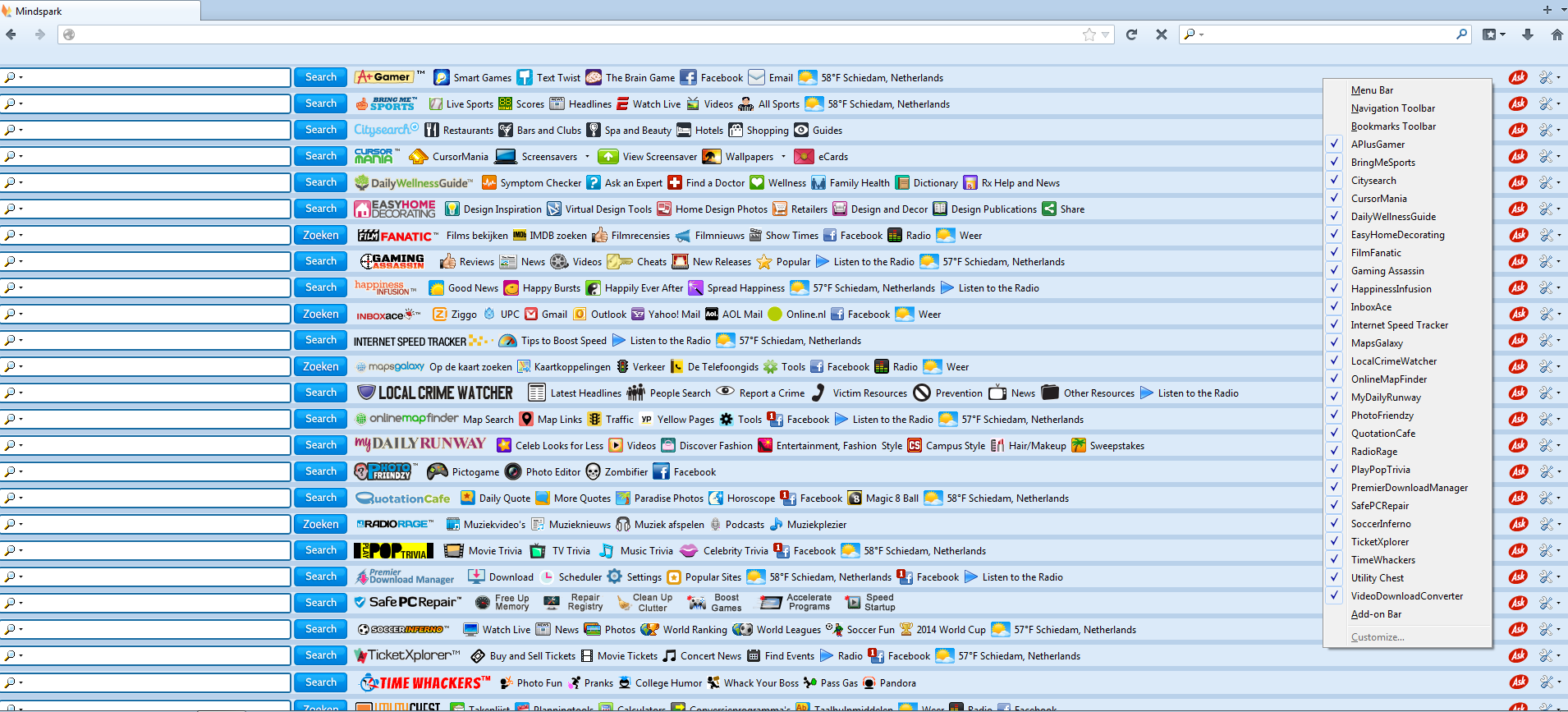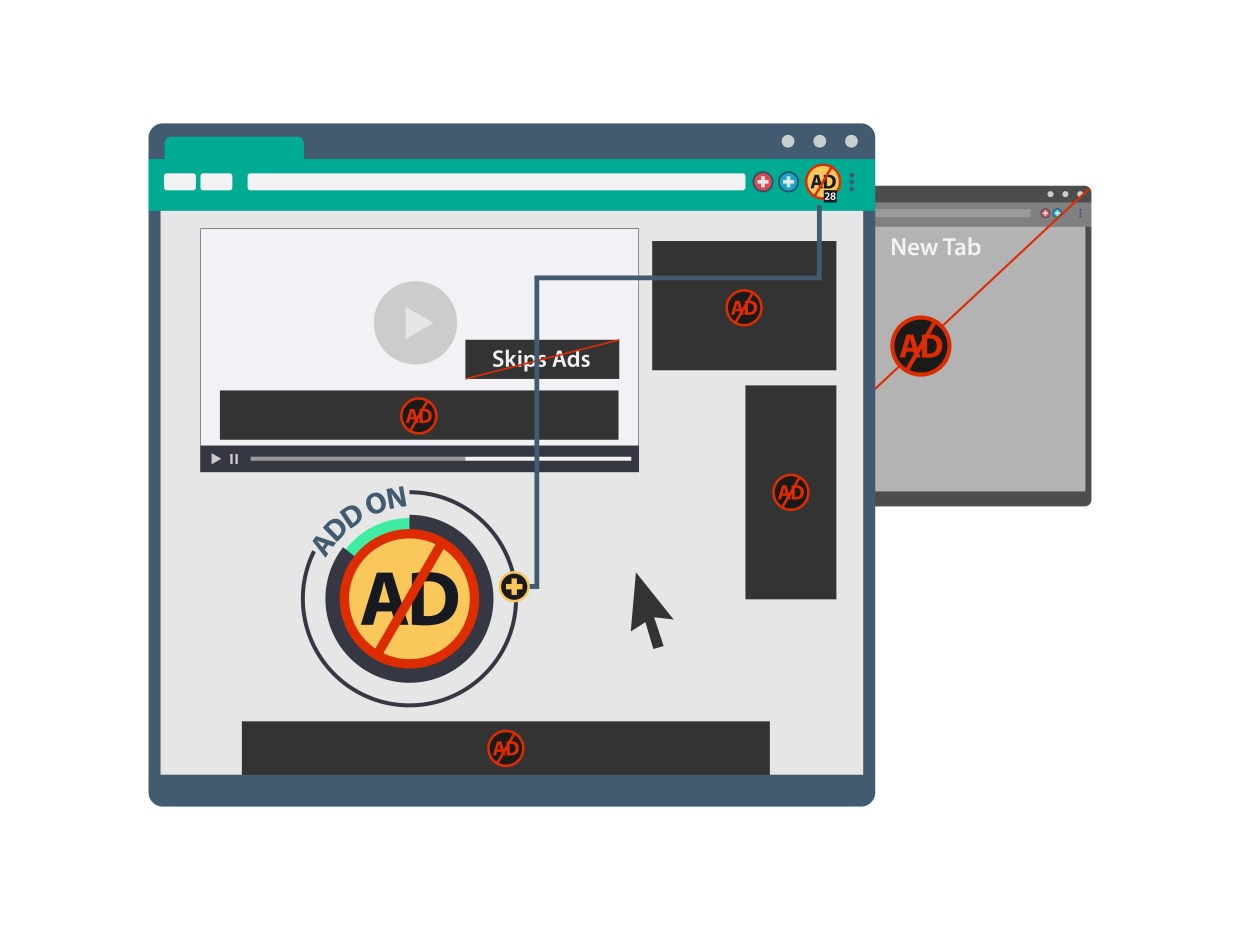“Close. Close. Close. ,” my mother mumbles as she aggressively clicks her mouse over and over.
“What’s wrong, Ma?” I’m home for the holidays, and cozy, cold evenings are often spent in front of the fireplace. This night, however, my mom is stuck at her computer.
“This stupid thing won’t stop showing me ads.”
“Looks like a job for Malwarebytes!” I joke, but come over to examine. Her screen is loaded with advertisements. Upon closing one, another pops up.

Looks like mom’s got adware.
What is adware?
Adware is short for advertising-supported software. It’s well-known for being a major Mac nuisance and has made itself ubiquitous on Android OSes, finding its way into the Google Play Store as Trojanized apps.
But adware is a PC problem, too. It delivers ads and other browser-cluttering junk most often in the form of pop-ups, tabs, and toolbars. Beyond simply bombarding you with ads, adware can hijack your browser, redirecting you to sites you weren’t planning on visiting (and showing you ads there) or delivering random, back-alley search engines results. It can slow down your computer and is often frustratingly difficult to remove.

Why would anyone knowingly install a program that behaves this way? The answer is: They wouldn’t. When legitimate software applications use online advertising, the ads are typically bundled within the program and designed and displayed in ways that the developer specified—and a good developer knows not to piss off customers with overbearing ads. Adware, in contrast, is specifically designed to be a nuisance, sneaking its way onto people’s systems by bundling up with legit programs or disguising itself as something else.
Whether you download adware without full knowledge of what you’re getting or whether it hides in the EULA of another software program like a stowaway, it’s behaving in a way that neither you nor the software it latches onto wants. This is what makes adware a type of potentially unwanted program, or PUP.
How is adware different from PUPs?
Adware is, essentially, a type of potentially unwanted program. PUPs also include other borderline malicious programs, such as spyware, browser lockers, dialers, and junkware. Security companies flag these programs as “potentially” unwanted, but the reality is, any sane person would not want this crap on their computer. Unfortunately, since most people aren’t paying close attention to what they download, they essentially agree to install the programs without realizing it.
Even more unfortunately, any attempts by security companies to fully block these programs as malware can get legally hairy. Thankfully, the cybersecurity industry is making strides in courtroom battles and in public opinion against software providers whose programs cross the line from slight bother to major asspain.
How do you get adware?
The most common ways for adware to infect PCs today are through toolbars/browser extensions, bundled software, and downloads offered by pop-ups.
A Trojan containing adware may pretend to be something you want, such as a plug-in or video player, but what you really end up downloading is an adware installer. Adware may also hide inside a legitimate download from an unethical site. Often, it shows up in downloaded files from torrents or piracy sites. It’s even making its way into the Google Play Store—with more frequency these days—and blessing Android devices with its garbage content.
The common theme among these delivery methods is deception. Adware makers trick users into willfully downloading programs they won’t like by pre-populating check boxes, greying out or minimizing options to skip, or plastering “recommended” next to a preferred option one-too-many times. Half the battle in avoiding adware intrusion on your device is reading install wizards and EULAs with hawk-eyed precision.

But let’s be real. No one does that.
That means you need a way out when you rush through an install agreement to download the free version of Bejeweled only to be dazzled by a flurry of ads all but ruining your screentime.
How to remove adware
Your way out is relatively simple. If you think you’ve got an adware problem on your PC, you can manually remove it in a few easy steps.
Back up your files. Always a good first precaution when you’re faced with a potential infection. Grab an external hard drive or save your most important data to the cloud.
Download or update necessary tools. To get your computer sparkly clean, you’ll need to download or run updates to a scanner that specializes in removing adware and PUPs (such as Adwcleaner or the free version of Malwarebytes). If you suspect your computer is heavily infected and you don’t have these tools, you’ll want to install them on a friend’s machine and transfer them to yours via CD or USB.
Uninstall unnecessary programs. Before scanning with a security product, check to see if the adware program has an uninstaller. To do this, go to the Add/Remove Programs list in the Windows Control Panel. If the unwanted program is there, highlight it and select the Remove button. After removing the adware, reboot the computer, even if you’re not prompted to do so.
Run a scan with an adware and PUPs removal program. Once the program has scanned and found adware, it will likely quarantine the stuff so you can take a look and decide whether or not to delete it. Our recommendation is delete, delete, delete. This will get rid of adware and any other residual files that could bring the adware back.
Read: How to remove adware from Macs
How to avoid adware infection
While the above steps can rid PCs of most adware, there are a few belligerent forms that are difficult to remove—and these more aggressive adware programs are popping up more and more (pun intended). The makers of adware today have adapted their techniques in order to skirt around more comprehensive ad-blocking tools introduced by major browser developers, including Google, Mozilla, and Microsoft. Their formerly grey tactics have turned to black.
The bad guys bundle their adware and PUPs programs with tools that act as protection against their removal by blocking security software from running or even being installed, or by stopping users from taking measures to remove the adware themselves. The only known way to protect against these attacks right now is to prevent them from happening in the first place. Thankfully, you can do just that with an adware- and malware-blocking security solution like Malwarebytes.











